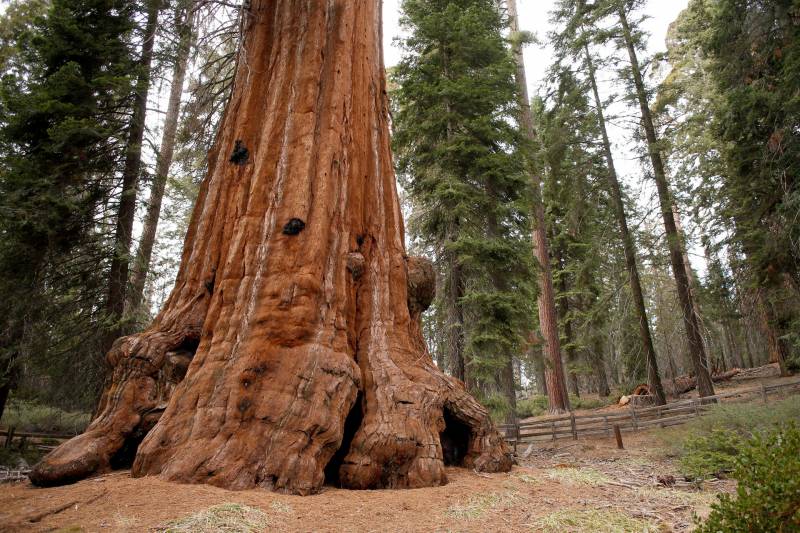Beware of climate greenwashing about both energy and forests — that is, rhetorical promises by governments, corporations, or banks that claim to solve the crisis but may or may not measure up in practice. The concept of “net zero emissions” demands special attention.
“Net zero” means that a given country or company will reduce emissions but not to absolute zero; rather, some emissions will continue, but they will be “offset” by countervailing measures that extract carbon from the atmosphere so the net result is zero emissions. Examples of these countervailing measures include planting trees and restoring wetlands; both draw CO2 out of the air through photosynthesis. With CO2 atmospheric concentrations currently at 414 parts per million and rising, some CO2 extraction will be needed to return concentrations to the 350 ppm or lower needed to stabilize earth’s climate.
“Net zero” is not necessarily a dodge, but offsets have a spotty record of achievement. For example: Were the promised trees actually planted? Did they survive and for how long? Were those wetlands truly restored, or only slated to be restored? Offsets also raise environmental justice concerns, for even authentic offsets in one part of the world can enable factories to keep operating in another part of the world, polluting the local environment of residents who often are poor or people of color.
Many net-zero commitments by governments and businesses cite 2050 as the year when net zero will be reached. Indeed, roughly 80% of the world economy is now covered by commitments of net zero by 2050. It’s important to report those commitments with a degree of skepticism: 2050 is far enough off that bold claims might seem possible, but those claims are only credible if they include real (i.e., non-offsets) and substantial emissions reductions during the next 10 years. To test the validity of net-zero 2050 pledges, journalists should check whether such commitments carry an action plan that credibly cuts emissions in half by 2030. That’s essential, scientists say, to hitting 1.5 degrees C. Promising that emissions will end by 2050 is easy for today’s politicians and corporate leaders, but that goal is only reachable if actual emissions fall by half in the next decade.
How did we get here?
It will undeniably be difficult to cut emissions as much and as fast as science says is necessary, and the main reason why is that humanity waited so long to start the job. Had we begun 30 years ago, as scientists and advocates were urging, we’d be most of the way there by now. And the main reason we waited so long is that some very rich and powerful economic and political interests knew climate action would interfere with their profits and privilege.
Investigative journalism has documented that Exxon and other fossil fuel companies knew by the late 1970s — because their own scientists were telling them — that climate change was real, caused by burning fossil fuels, and threatened to end civilization as we know it. Nevertheless, the companies chose to lie to the public, policymakers, and the press to thwart climate action. Recently, the companies have shifted from outright climate denial — no longer tenable in the face of so much extreme weather — to its more presentable cousin, climate delay. But climate delay is just as lethal, precisely because 40 years of failing to act has left zero time for further delay.
Fossil fuel companies now face dozens of lawsuits from governments and civil society groups demanding compensation for the climate damages the companies’ lying helped cause.
How do we live with 1.5 degrees C?
As the extreme weather in recent years has shown, climate impacts are punishing even after “only” 1.1 degrees C of temperature rise. This is especially so for the roughly two billion people who live in the (usually poorer) countries most vulnerable to climate change. Temperatures and impacts are bound to increase in the years ahead, if only because humanity can’t halt emissions overnight.
Hence, the need for what climate experts call “adaptation”: actions to reduce one’s vulnerability to the impacts of climate change. Examples of adaptation include when a community builds sea walls to protect against hurricanes, when a homeowner plants trees around the house to shade it from extra heat, and when a farmer shifts from growing almonds and alfalfa to less thirsty crops. By contrast, “mitigation” refers to actions to limit global temperature rise, such as replacing a coal-fired power plant with a wind turbine or installing more efficient appliances, windows, and insulation to reduce the amount of energy a household uses.
Adaptation has never gotten the attention mitigation gets, perhaps because it was assumed, wrongly, that the rich could adapt relatively easily to rising temperatures. For example, the British government spent roughly $3 billion dollars to build the Thames Barrier, a set of massive floodgates downriver from central London, to protect the city from North Sea storm surges. But in fact, adaptation and mitigation are twin imperatives: Mitigation is essential to limit temperature rise to an amount humans can survive, but adaptation is no less essential; because we’ve waited so long, stronger climate impacts are now unavoidable, and the only way to survive them is to prepare.
Some of the best climate adaptation research and practice happens to be found in two of the most vulnerable countries on earth: The Netherlands and Bangladesh. The former is rich, the latter not, illustrating that wealth alone is not decisive. More important is that a country starts adapting now, rather than waiting until climate impacts engulf it.
Examples of successful adaptation abound (see CCNow executive director Mark Hertsgaard’s book “HOT: Living Through the Next Fifty Years on Earth” for specifics), but they all cost money, which is where the contrast between rich and poor does have meaning. A low-income country such as Bangladesh simply does not have the financial means as the wealthy Netherlands to adapt to a changing climate and its worsening impacts.
Which is why the issue of climate adaptation will arise at COP26 mainly in regards to the $100 billion in annual aid that rich countries have pledged to provide to poor countries. This pledge, enshrined in the 2015 Paris Agreement, is supposed to subsidize both mitigation and adaptation efforts in poor countries. Independent experts calculate that poor countries need much more than that; meanwhile, rich countries have not provided even that much. An analysis by the anti-poverty NGO Oxfam found that in 2018 (the last year with reliable data), climate aid was roughly $20 to $22 billion.
Developing countries have warned in the lead-up to COP26 that there will be no deal if rich countries don’t deliver a credible plan to deliver the $100 billion in annual aid.
 We are 1.1 degrees Celsius above pre-industrial levels now. Capping average global temperature at 1.5 degrees C (equivalent to 2.7 degrees Fahrenheit) is within our grasp, but it will be hard, and the window is closing. As journalists we must get this story right for our audiences. They need to understand that global temperature rise can still be stopped before it reaches a catastrophic level — that doing or not doing so is a choice governments are making. This explainer covers the importance of 1.5 degrees C, the forces standing in the way of achieving it, and what it means to live in a 1.5 degrees C, or even warmer, world. It also includes some questions to prompt story ideas and short resource lists for your reference.
We are 1.1 degrees Celsius above pre-industrial levels now. Capping average global temperature at 1.5 degrees C (equivalent to 2.7 degrees Fahrenheit) is within our grasp, but it will be hard, and the window is closing. As journalists we must get this story right for our audiences. They need to understand that global temperature rise can still be stopped before it reaches a catastrophic level — that doing or not doing so is a choice governments are making. This explainer covers the importance of 1.5 degrees C, the forces standing in the way of achieving it, and what it means to live in a 1.5 degrees C, or even warmer, world. It also includes some questions to prompt story ideas and short resource lists for your reference.
